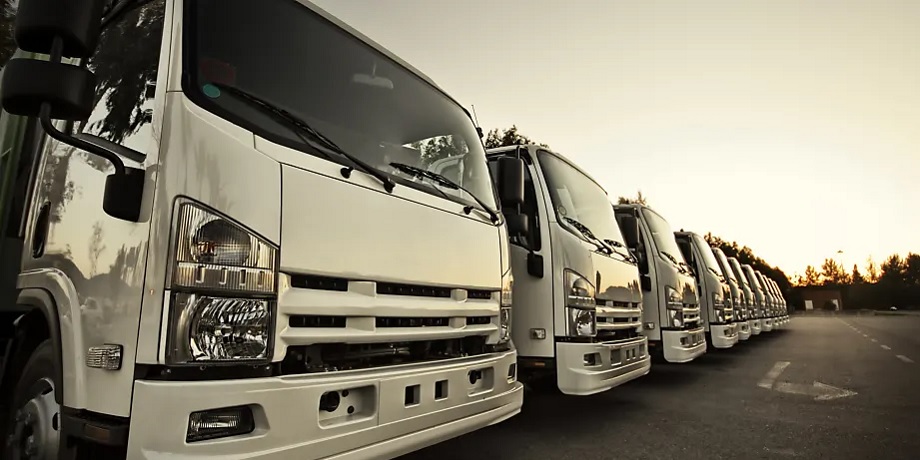6 tips to expedite procuring a fleet of public vehicles

Acquiring public fleet vehicles is one of the most time-consuming tasks for the modern CPO. According to the federal government, the timelines for public fleet procurement have expanded to three- to five-month waiting periods, and if customizations are involved, the wait could take even longer. Current timelines for various models include:
- Sedans and wagons: 90-day OTD
- Pickup trucks and vans: 120-day OTD
- Medium and heavy trucks and buses: 120- to 150-day OTD
- Special equipment (i.e., police, fire): 150-plus-day OTD
OTD times in fleet procurement cannot necessarily be expedited. However, the process that comes before your order can be sped up to accommodate a faster timeline. This involves the use of modernized solutions, such as cooperative contracts.
Three mistakes that slow down the procurement of a fleet of vehicles
Most public fleet procurement processes look extremely lean on paper. However, accounting for the various slip-ups and pitfalls could result in a stretched or less-effective timeline. Public fleet procurement officers report three major obstacles affecting their OTD:
- Rushing to complete tasks: Procurement officers are under a great deal of pressure to accomplish their work quickly. However, due to the daily work uncertainties and unexpected tasks, it may be difficult to check all the boxes in a reasonable timeframe. Managers may be forced to rush through their to-do lists, causing them to accidentally forget key compliance regulations or settle for a less-effective vehicle.
- Not planning early enough: Vehicle failures can strike at the worst possible time, leaving your agency in dire need of a replacement. However, failing to plan in advance for the replacement of a fleet vehicle could exacerbate timelines extensively. Your order may get stuck at the bottom of the pile, stretching out OTD timelines and forcing you to wait for a vehicle for several months.
- Failing to take strategic action: Not planning for the long haul could leave your agency stranded in times of upheaval. Supply chain issues, rapid inflation, and even global pandemics can upend the traditional procurement process and lock down the vehicles that you need. Failing to plan for potential disruptions could mean a much longer wait time and a more frustrating process overall.
Watching your public procurement timeline expand can be frustrating, if not defeating. Fortunately, many opportunities are available to the open-minded procurement officer.
Six ways to purchase a public fleet of vehicles fast
Dozens of obstacles can get between you and your fleet procurement goals. However, you can use streamlined strategies to preserve your timeline and avoid unforeseen challenges.
1. Allow enough time for contracting
Be sure to give yourself enough time to complete the contracting process. Traditional RFPs may take nine months to three years to finalize. However, you could also turn to cooperative contracts, which take weeks rather than months to complete.
2. Communicate early and often
Rather than a once-yearly meeting, check in with your procurement partners on a monthly basis. This communication can help resolve issues before they become too serious and give everyone a better sense of your timeline. Phone calls, video meetings, and quick face-to-face conferences are always helpful.
3. Know what you need before the rush
Have a list of what you require several months (or years) in advance. This way, when the need arises, you already know what to order and can quickly pass it on. You can also get ahead of the rush and develop better relationships with your suppliers.
4. Connect with fleet procurement tools
Telematics and e-procurement software are the new norms in public fleet management. They can provide an up-to-date snapshot of your current fleet and help you make cost projections for maintenance and acquisitions. Organizations using procurement software have saved up to 42% per year by reducing physical paperwork and minimizing repetitive labor.
5. Develop a risk mitigation strategy
Reducing your total cost of ownership could reallocate resources better, leading to a healthier organization overall. Developing a risk mitigation strategy is essential to this, as is partnering with multiple stakeholders in your organization.
6. Avoid the lengthier process of traditional bids
Instead of relying on dated bidding practices, you could turn to cooperative contracts for a faster OTD. You can sidestep RFPs and IFBs with contracts that exceed agency requirements. If you are located in the US, you can browse through Sourcewell’s cooperative contracts for free.
How to use cooperative contracts to purchase a fleet of vehicles
Organizations like schools and government bodies have access to cooperative contracts that can expedite the procurement of public vehicles. The process takes just minutes to begin and can save you measurable time, money, and effort. If you are eligible for Sourcewell's services, you can access cooperative contracts at no extra cost.
Here's how it works:
- Look through the available options and browse hundreds of awarded contracts.
- Search contracts, and narrow them down to a perfect option by sorting by supplier name, type of contract, or keyword.
- Contact the supplier, get a quote, and finalize the sale via the contractor or your local supplier.
If you’re not sure what fleet solutions your organization needs, you can connect with a trained specialist from Sourcewell for help.
Here at Sourcewell, we help public agency buyers procure fleet vehicles faster by fulfilling the time-consuming bid process for them. Through cooperative contracts, we expedite the fleet vehicle procurement process so you can better serve your teams.
Want a faster procurement process? Contact one of our specialists today to buy the fleet solutions you need!


